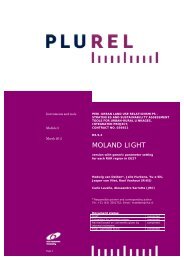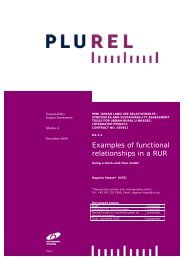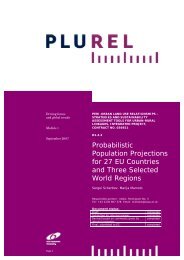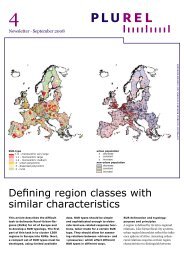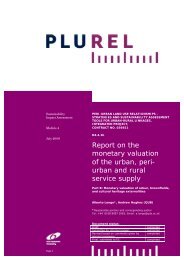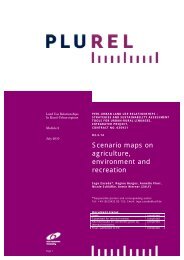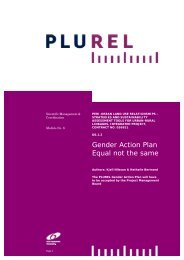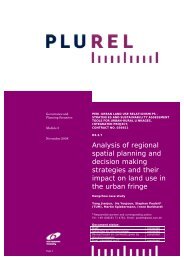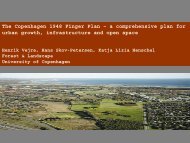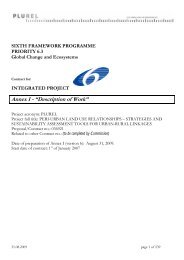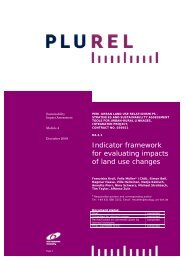Cost benefit analysis of peri-urban land use policy - Plurel
Cost benefit analysis of peri-urban land use policy - Plurel
Cost benefit analysis of peri-urban land use policy - Plurel
Create successful ePaper yourself
Turn your PDF publications into a flip-book with our unique Google optimized e-Paper software.
Introduction and Context 13<br />
Following rapid growth <strong>of</strong> <strong>peri</strong>-<strong>urban</strong> areas in many <strong>of</strong> the European cities in the form <strong>of</strong> dispersed<br />
and scattered type <strong>of</strong> developments (such as <strong>urban</strong> sprawl), sustainable <strong>urban</strong> development and<br />
<strong>urban</strong> growth management has become a central issue both in planning theory and practice. The<br />
main issue among researchers and practitioners is the search for linkages between rural and <strong>urban</strong><br />
spatial structure and transportation systems which will achieve sustainable <strong>urban</strong> form and efficient<br />
transport provisions (see for example Hillman, 1996; Breheny, 1995). Efficiency in transportation<br />
which is closely related to the <strong>urban</strong> structure is generally achieved by “reducing trip lengths and<br />
times, enabling efficient transit as the dominant mode <strong>of</strong> transport, and reducing transport-related<br />
emissions, pollution and accidents” (Williams, 2005: 1).<br />
The theory suggests that compact city is preferred to more dispersed patterns in terms <strong>of</strong> sustainable<br />
spatial development and transportation efficiency. The reason is related to the reduction in travel<br />
demand and travel time since most <strong>of</strong> the activities are closely located in the compact form (see for<br />
example Hillman, 1996; Bertaud, 2004). It is also argued that compact form can support public<br />
transport services better than dispersed form since population densities in the former case are high<br />
enough to provide efficiency in different modes <strong>of</strong> public transportation (see Williams, 2005). In the<br />
other extreme <strong>of</strong> the literature, there are also studies questioning the sustainability <strong>of</strong> compact form<br />
(see Breheny, 1995) and suggesting that decentralised or polycentric solutions will be better. One<br />
reason for this is that multi-centred cities provide significant transport <strong>benefit</strong>s by locating<br />
residences close to employment centres (see Williams et.al. 2000).<br />
Related to these theoretical findings, existing planning practice has shown that there are attempts<br />
such as dispersion <strong>of</strong> facilities over residential areas to achieve mixed development and pedestrian<br />
oriented transportation (Ritsema van Eck et.al. 2005) on the one hand; and on the other hand, there<br />
are strategies such as transit oriented development (Jenks, 2005), containment policies (Nelson,<br />
1999), and polycentric <strong>urban</strong> areas (Meijers, 2005) which focus on various modes <strong>of</strong> transportation<br />
to support development along or near the existing public transportation axis. Therefore, both theory<br />
and planning practice imply that accessibility to various services is important in sustainable<br />
development which could be encouraged by provision <strong>of</strong> high quality and efficient transport systems.<br />
13 This chapter replicates some material contained in an earlier deliverable as part <strong>of</strong> M2 in PLUREL.<br />
60



